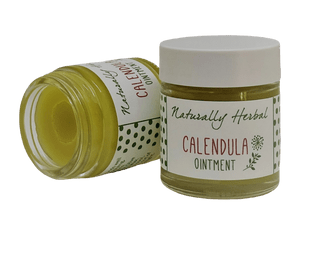Calendula | Calendula officinalis (Marigold)
These bright orange flowers are also known as Marigolds - and have been cultivated for centuries. These edible flowers are considered an essential in most herbalists gardens.
A beautiful golden flower that opens with the sun and enjoys a warm, sunny climate, Calendula has many benefits with a long traditional history. Calendula is a flowering plant commonly known as marigold. It is native to Asia and southern Europe where it often flowers all year. In herbal medicine the orange flower heads are harvested when fully open on a dry day and allowed to air dry. The petals are used in herbal preparations and the seed head, stalk and leaves discarded.
Topically, Calendula is used to support poorly healing wounds, burns, and leg ulcers through anti-inflammatory action and shows some evidence of antibacterial activity. It is also used topically for nosebleeds, varicose veins, nappy rash.
The flower petals contain some active ingredients include triterpenes (alcohols and esters) with at least eight bioactive triterpendiol monoesters have been identified in the extracts of dried calendula flowers. Calendula also contains minerals, lipids, phenolic acids, flavonoids, tannins, coumarins, sterols and steroids, monoterpenes, sesquiterpenes, triterpenes, tocopherols, quinones, amino acids, polysaccharides, mucilage and resins.
The herb is deemed likely safe when used topically with the caveat that those allergic to the Daisy Family (Asteracea/ Compositae) should avoid using it.
Not suitable for pregnant women.





